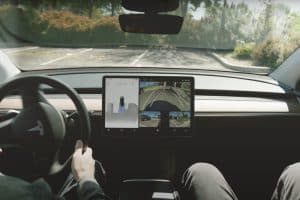- 💻 Hacker team Synacktiv successfully exploits Tesla’s electronic control unit (ECU).
- 🏆 Synacktiv wins a new Tesla Model 3 and $200,000 as a result of the successful hack.
- 🛠️ The exploit occurred at the 2024 Pwn2Own event in Vancouver using a single integer overflow to exploit Tesla’s ECU with Vehicle (VEH) CAN BUS Control.
- 🚗 CAN BUS is a message-based protocol allowing communication between ECUs in cars, controlling various functions like transmissions, airbags, and cruise control.
- ⚠️ Successful exploitation of the ECU can render the vehicle inoperable, highlighting the severity of the security breach.
- 🏅 Synacktiv’s success earns them 20 Master of Pwn points, placing them first in the competition.
- 🔒 Tesla sponsors hacking events like Pwn2Own to identify and address security vulnerabilities, enhancing the security of their vehicles.
- 🌐 Other groups have also successfully hacked Tesla vehicles, emphasizing the importance of continuous cybersecurity efforts in the automotive industry.
In a world where technology is advancing at an unprecedented rate, cybersecurity has become a paramount concern, especially in the automotive industry. The recent exploit of Tesla’s electronic control unit (ECU) by the hacker team Synacktiv has sent shockwaves through the automotive and cybersecurity communities alike. In this blog post, we’ll delve into the details of this high-profile hack, its implications, and what it means for the future of automotive security.
Understanding the Tesla ECU Exploit
The exploit, which took place at the 2024 Pwn2Own event in Vancouver, saw Synacktiv successfully infiltrate Tesla’s ECU using a single integer overflow. This vulnerability allowed them to gain control over the Vehicle (VEH) CAN BUS, a critical component of the vehicle’s communication system.
- The Vulnerable Component: The ECU, responsible for managing various vehicle functions, including transmissions, airbags, and cruise control, proved to be the weak link in Tesla’s security architecture.
- The Method: Synacktiv leveraged a single integer overflow to exploit the ECU, highlighting the importance of robust software development practices and rigorous security testing.
Implications of the Hack
The successful exploitation of Tesla’s ECU has far-reaching implications for both Tesla and the automotive industry as a whole:
- Vehicle Inoperability: Perhaps the most immediate concern is the potential for rendering the vehicle inoperable. With control over critical functions compromised, the safety and functionality of the vehicle are compromised.
- Reputation Damage: For Tesla, a company known for its innovation and commitment to cutting-edge technology, the hack represents a significant blow to its reputation. Customers may question the security of Tesla vehicles, impacting sales and brand loyalty.

The Role of Tesla and Cybersecurity
In response to the hack, Tesla’s proactive approach to cybersecurity is commendable:
- Sponsorship of Hacking Events: Tesla routinely sponsors events like Pwn2Own, providing hackers with incentives to uncover vulnerabilities in their systems. This collaborative approach helps identify and address security flaws, ultimately enhancing the security of Tesla vehicles.
- Continuous Improvement: The hack serves as a reminder that cybersecurity is an ongoing process. Tesla must continue to invest in research, development, and testing to stay ahead of evolving threats.
The Need for Industry-Wide Collaboration
The hack underscores the importance of collaboration between automakers, cybersecurity experts, and regulatory bodies:
- Sharing Best Practices: By sharing best practices and lessons learned, automakers can collectively strengthen the security of connected vehicles, mitigating the risk of future exploits.
- Regulatory Oversight: Regulatory bodies play a crucial role in setting cybersecurity standards and holding automakers accountable for ensuring the security of their vehicles.
Conclusion: Towards a Secure Automotive Future
The Tesla ECU hack serves as a wake-up call for the automotive industry, highlighting the urgent need for robust cybersecurity measures. As technology continues to evolve, automakers must prioritize security to safeguard the integrity and safety of connected vehicles. By fostering collaboration, embracing best practices, and remaining vigilant against emerging threats, we can pave the way towards a secure automotive future.





